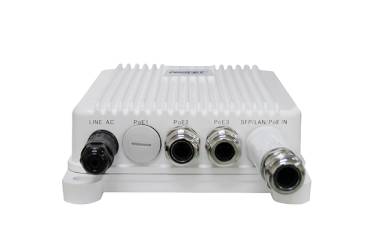PoE switch is a switch that supports network cable power supply. It can not only realize the data transmission function of ordinary switches but also supply power to network terminals (such as video cameras and AP wireless devices). Simply put, he is a switch that can supply power, so how to configure a custom PoE switch?
PoE switches are divided into network-managed PoE switches and non-managed PoE switches. Non-managed PoE switches are specifically designed to meet PoE power supply, plug and play, and require no configuration. The unmanaged PoE switch with mode switch also supports three working modes of standard switching, video surveillance, and VLAN isolation, which can adapt to various complex environments.

Poe Switch
Network-managed PoE switches provide a variety of network management methods, such as console-based (Console), Web-based pages, and Telnet access to the network. First of all, there must be a configuration line for the switch. The original PoE switch connection cable is generally a console line connected to the switch, and the other is a serial cable connected to the computer. Yes, there is a special reserved management network port.
Therefore, the network administrator can monitor the working status and network running status of the switch in real time, locally or remotely, and manage the working status and working mode of all switching ports globally.
Network-managed switches support the SNMP protocol. The SNMP protocol consists of a set of simple network communication specifications. It can complete all basic network management tasks, requires less network resources, and has some security mechanisms. The working mechanism of the SNMP protocol is very simple. Network information is mainly exchanged through various types of messages, namely PDUs (protocol data units).
There are also network-managed switches that provide policy-based QoS (Quality of Service). A policy is a rule that controls the behavior of a switch. A network administrator uses policies to allocate bandwidth, priorities, and control network access for application flows. The focus is on the bandwidth management policies required to meet service level agreements and the way in which policies are issued to switches.
Multi-function light-emitting diodes (LEDs) at each port of the switch to indicate port status, half-duplex / full-duplex, and 10BaseT / 100BaseT, and switch-level status to indicate system, redundant power (RPS), and bandwidth utilization LED forms a comprehensive and convenient visual management system. At present, most of the switches below the department level are mostly unmanaged, and only enterprise-level and a few department-level switches support the network management function.